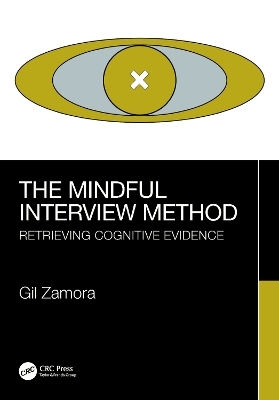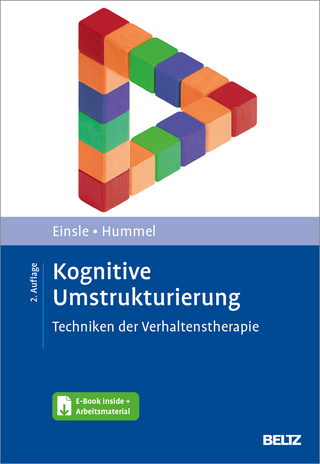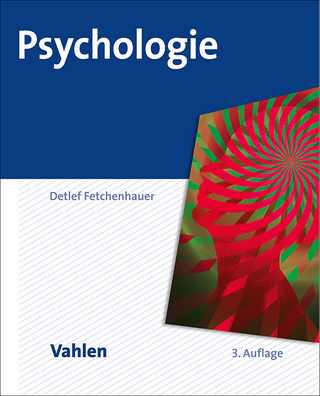
The Mindful Interview Method
CRC Press (Verlag)
978-1-032-20310-2 (ISBN)
- Titel z.Zt. nicht lieferbar
- Versandkostenfrei innerhalb Deutschlands
- Auch auf Rechnung
- Verfügbarkeit in der Filiale vor Ort prüfen
- Artikel merken
The Mindful Interview Method: Retrieving Cognitive Evidence provides investigators with a proven methodology to gather authentic, reliable information from eyewitnesses to help identify potential suspects. The book offers police, and non-law enforcement readers, step-by-step techniques to improve gathering reliable evidence through a "mindful" interview process. The author also provides an assessment component that can measure the reliability of previous interviews performed, and further help to improve the interview process, the skills of the investigator, and thus the reliability of cognitive evidence gathered from future interviews.
It is notable that there is minimal to no instruction or training currently offered to those individuals most-often tasked with interviewing an eyewitness about a crime as part of criminal investigations. Despite the lack of training and certification, we allow interviewers to conduct questioning in the face of well-established research as to the malleability of human memory. The assumption is that officials, trained in the rules of evidence, will innately ask the right questions—and in the proper manner—without the proper understanding of the fragility of human memory or the proper training. That assumption is false, and the reality is quite the opposite. In fact, we learn of cases commonplace in the media, that frequently involve questionable interview tactics, misidentifications, and wrongful convictions of innocent people.
The Mindful Interview Method uses cognitive research to inform the methods and principles for a mindful approach to gathering only the information the subject remembers. This is the best way to use evidence-based lines of questioning, to perform interviews that elicit the most reliable accounts and information for investigative purposes. Considering current reforms on best practices throughout the criminal justice system, the book provides a path forward for professional interviewers to adopt interview methodologies that guide the practitioner to question anyone in a mindful manner.
Gil Zamora retired from the San Jose Police Department in 2011 as the police artist. During his time there, he interviewed well over 3,000 eyewitnesses to crimes ranging from indecent exposure to murder. He was certified in the FBI Composite Art technique in 1993 and apprenticed with renowned police artist, Tom Macris, from 1992 - 1995. He developed his own interview methodology, Compositure (1998), based on the cognitive interview technique and focused on the elimination of post event information to stimulate eyewitness memory. His interview technique led him to help solve several hundreds of investigations in the Bay Area and testify as an expert forensic artist in various criminal court cases. Mr. Zamora was a senior instructor (from 2000 - 2014) in the cognitive interview technique and trained investigators throughout the state of California in advance interview techniques certified by P.O.S.T. He provided annual training for SJPD investigators coming into the bureau to inform them about forensic art resources to help in their investigations. Mr. Zamora is a frequent speaker at local universities, victim advocacy groups, and law enforcement agencies.
Part I: Perspectives 1. Introduction 2. A Different Path Part II: Establishing Principles 3. Cognitive Evidence 4. The Detective Mind 5. Heuristics of Interviewing Eyewitnesses 6. Investigating Mindfulness Part III: How We Interview Eyewitnesses 7. Mindful of the Innocent 8. Mindful of Interrogations 9. Empathetic Strategy Part IV: Mindful Interview Method 10. Principles Behind Mindful Interview Method 11. How to perform the Mindful Interview Method Part V: Meta-eyewitness Interviews 12. Eyewitness Interview Paradigm 13. Eyewitness Interview Training 14. Measuring the Noise Part VI: Analyzing Case Studies 15. Case Study#1 16. Case Study #2 17. Case Study #3 18. Case Study #4 19. Case Study #5 Part VII: Expectations 20. Expectations and Future Research Appendix A - Category of Questions and Comments Appendix B - Sample MIM Script Appendix C - Forensic Art Indexing Appendix D - List of All Case Studies Appendix E - Case Study Transcripts and EEIA Summary Reports
| Erscheinungsdatum | 21.07.2023 |
|---|---|
| Zusatzinfo | 35 Tables, black and white; 11 Line drawings, color; 151 Line drawings, black and white; 219 Halftones, color; 5 Halftones, black and white; 230 Illustrations, color; 156 Illustrations, black and white |
| Verlagsort | London |
| Sprache | englisch |
| Maße | 178 x 254 mm |
| Gewicht | 1140 g |
| Themenwelt | Geisteswissenschaften ► Psychologie ► Allgemeine Psychologie |
| Naturwissenschaften ► Biologie | |
| Recht / Steuern ► Strafrecht ► Kriminologie | |
| ISBN-10 | 1-032-20310-2 / 1032203102 |
| ISBN-13 | 978-1-032-20310-2 / 9781032203102 |
| Zustand | Neuware |
| Informationen gemäß Produktsicherheitsverordnung (GPSR) | |
| Haben Sie eine Frage zum Produkt? |
aus dem Bereich


